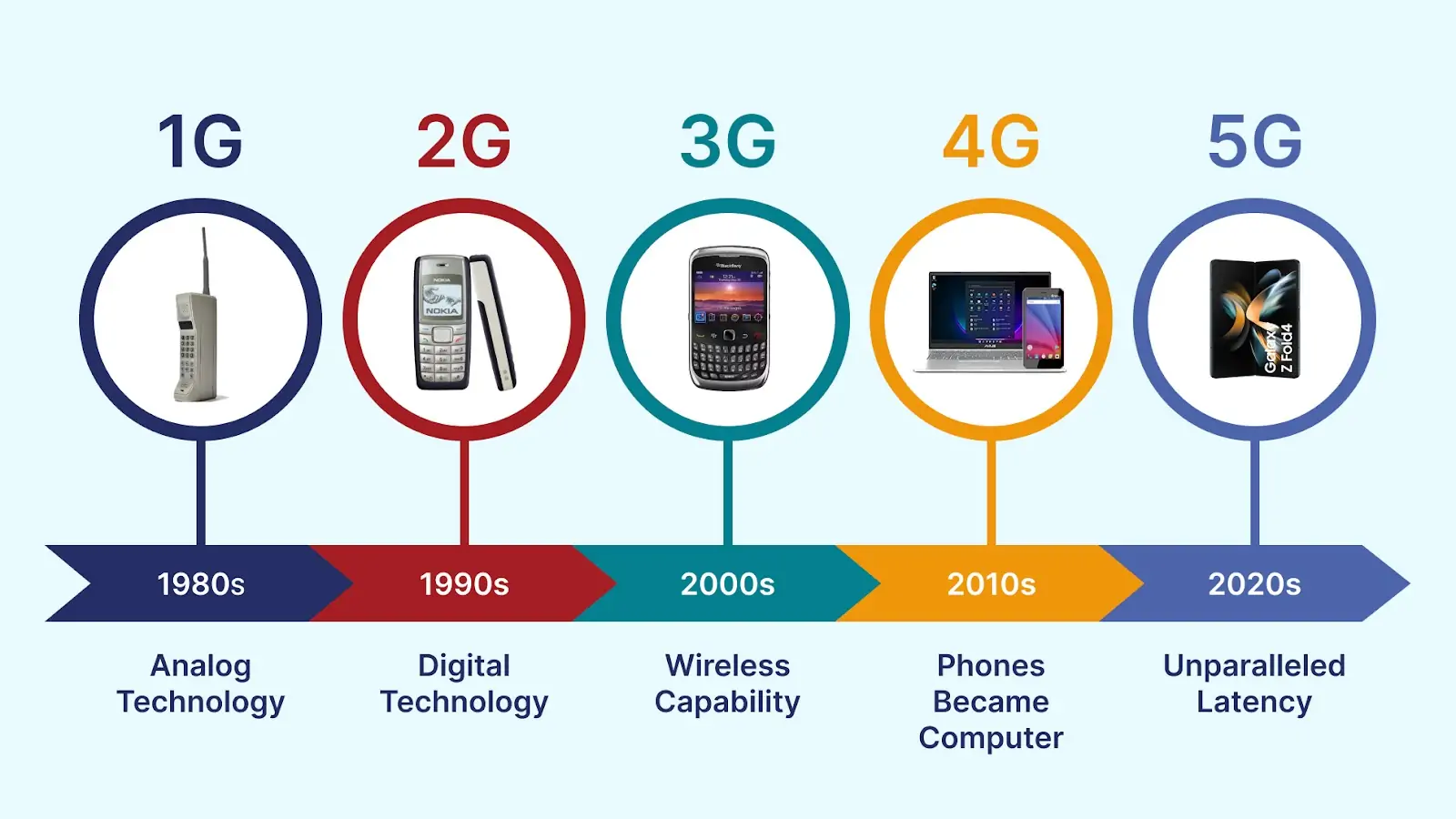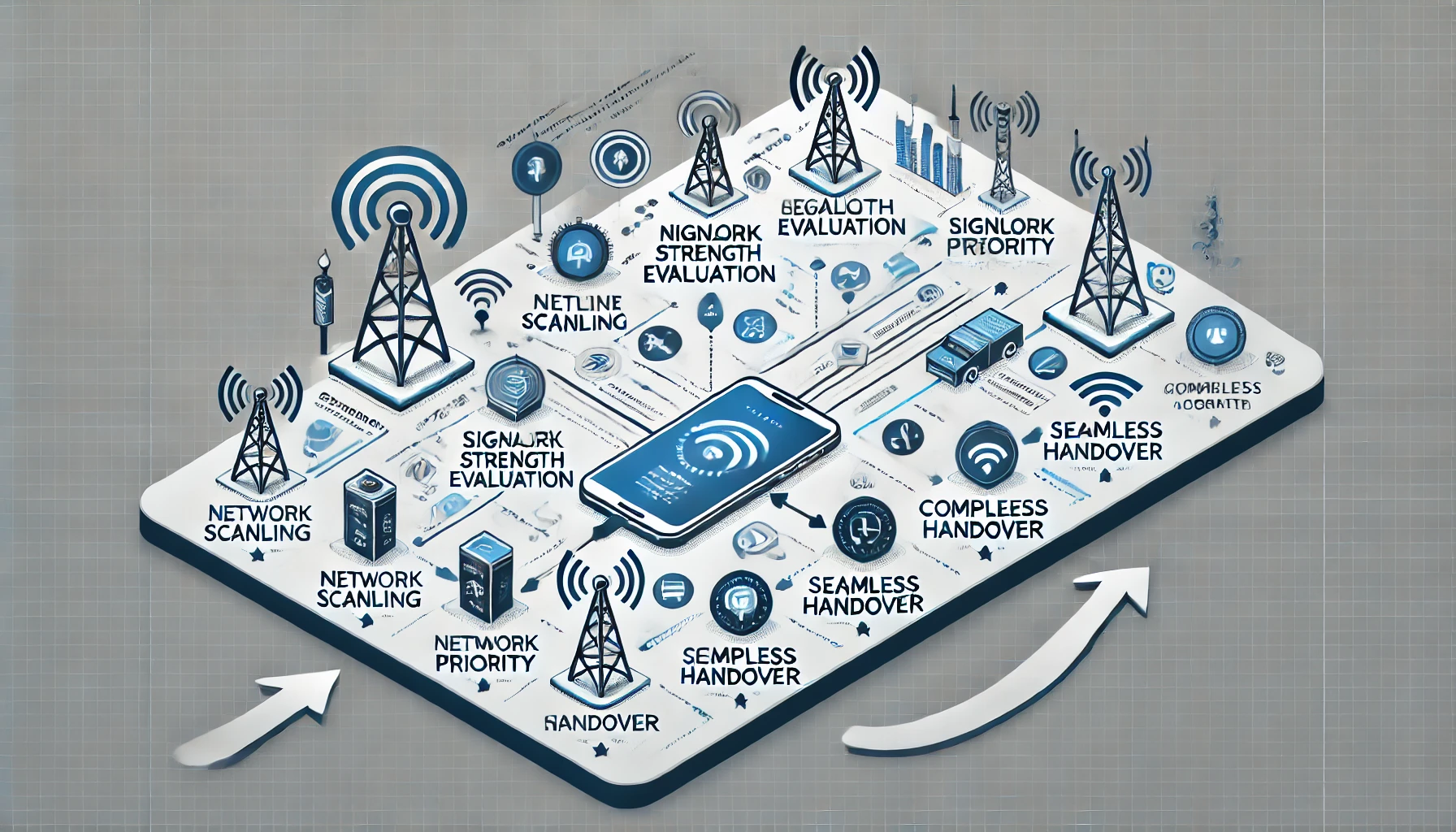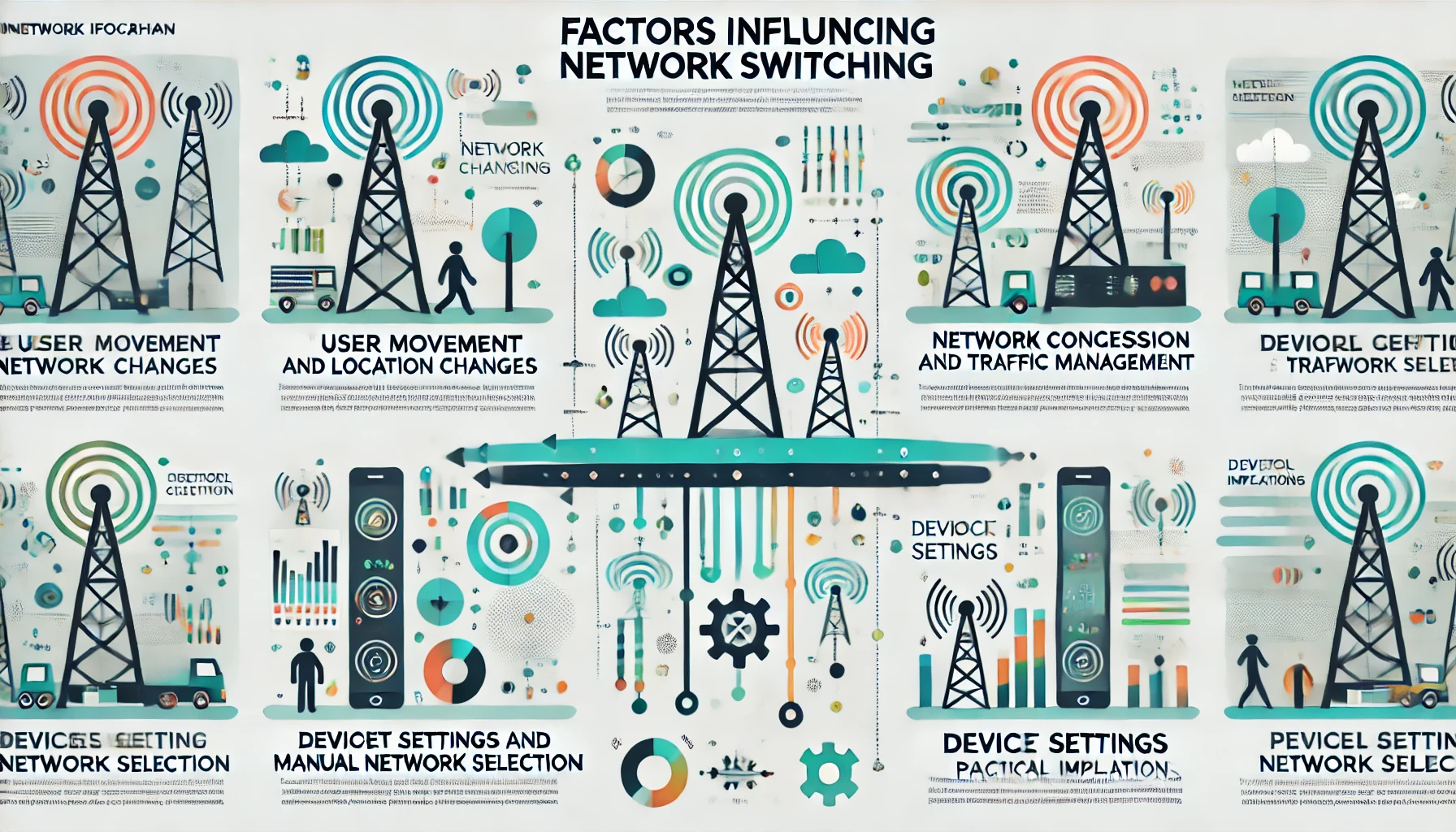In the dynamic world of mobile communication, understanding the different generations of mobile networks and the technology behind network switching is crucial. Each generation has brought significant advancements from 1G to the latest 5G, enhancing our connectivity and overall mobile experience. This comprehensive guide delves into these mobile network types’ history, features, and limitations. It explores the intricacies of network switching, which ensures seamless connectivity as we move through various network environments.
Understanding Mobile Network Types
1G (First Generation)
- Basic Information and History: In the 1980s, 1G was the first generation of mobile networks primarily based on analog signals.
- Key Features and Limitations: While it introduced mobile communication, it had limited capacity, poor sound quality, and minimal security.
2G (Second Generation)
- Basic Information and History: Introduced in the early 1990s, 2G brought digital transmission to mobile networks.
- Key Features and Limitations: Enhanced security, better sound quality, and SMS capabilities were the highlights, though data speeds were still limited.
3G (Third Generation)
- Introduction and Advancements from 2G: In the early 2000s, 3G significantly improved data transmission, enabling mobile internet and multimedia applications.
- Notable Features and Use Cases: Higher data speeds, video calling, and mobile internet browsing became mainstream.
4G (Fourth Generation)
- Development and Improvements Over 3G: In the late 2000s, 4G offered even faster data speeds and better connectivity.
- Impact on Mobile Internet Usage: 4 G revolutionized mobile internet usage, supporting HD video streaming, online gaming, and enhanced mobile apps.
5G (Fifth Generation)
- Latest Advancements and Benefits: The latest mobile network technology, 5G, offers ultra-fast speeds, low latency, and greater capacity.
- Future Potential and Ongoing Developments: Expected to drive innovations in IoT, autonomous vehicles, and smart cities.
The Technology Behind Network Switching
Baseband Processors
- Role in Network Connectivity: Baseband processors manage all radio functions in a mobile device, ensuring smooth communication.
- Handling Different Network Types: They are crucial for handling transitions between various network generations seamlessly.
Modems
- Function and Integration in Mobile Devices: Modems enable devices to connect to different networks, translating digital data to signals.
- Influence on Network Switching Efficiency: Efficient modems ensure quick and smooth network switching.
Network Infrastructure
- Cellular Towers and Network Distribution: The backbone of mobile networks, towers distribute signals and manage traffic.
- Supporting Multiple Network Types: Advanced infrastructure supports the coexistence and transition between different network types.
How Mobile Phones Detect Available Networks
Scanning for Networks
- Process of Network Scanning by Mobile Phones: Mobile devices continuously scan for available networks to maintain connectivity.
- Role of SIM Cards and Network Preferences: SIM cards store network preferences, guiding the device in network selection.
Signal Strength Evaluation
- How Mobile Phones Assess Signal Strength: Devices measure signal strength to determine the best available network.
- Factors Influencing Signal Quality and Network Selection: Environmental factors, distance from towers, and network congestion affect signal quality.
Network Priority
- Pre-defined Priorities for Network Types: Devices are programmed to prefer certain networks, such as 4G over 3G.
- Customizable Settings for Network Preference in Modern Smartphones: Users can customize network preferences for optimal performance.
The Process of Switching Between Networks
Seamless Handover
Explanation of the Handover Process
Handover ensures continuous connectivity between network cells, crucial for maintaining an uninterrupted user experience during mobile communication. This process involves transferring an ongoing call or data session from one cell to another without dropping the connection.
Steps in the Handover Process:
- Detection of Need for Handover: The network continuously monitors signal strength and quality.
- Decision to Handover: The network initiates a handover when the signal weakens below a threshold.
- Target Cell Selection: The network selects the most suitable target cell for the handover based on signal strength, cell load, and other factors.
- Resource Allocation: Resources are allocated in the target cell to accommodate the handover.
- Execution of Handover: The call or data session is transferred to the target cell.
- Completion and Acknowledgment: The target cell acknowledges the successful handover, and the user experiences no interruption.
Role of Mobile Switching Centers (MSCs)
Mobile Switching Centers (MSCs) in the Handover Process: MSCs manage the handover process, ensuring uninterrupted calls and data sessions. They are critical in maintaining seamless connectivity as users move across different cell areas.
Functions of MSCs in the Handover Process:
- Monitoring Signal Quality: MSCs continuously monitor the signal quality of active connections.
- Coordination with Base Stations: MSCs coordinate with base stations to facilitate smooth handovers.
- Decision Making: MSCs decide when and where to initiate handovers based on network conditions.
- Resource Management: MSCs manage network resources to ensure no congestion during handovers.
- Maintaining Call Integrity: MSCs ensure that the call integrity is maintained throughout the handover process.
Inter-RAT (Radio Access Technology) Handover
Detailed Process of Switching Between Different RATs: Switching from one network type to another involves complex coordination, like 4G to 3G. Inter-RAT handovers are necessary when a user moves out of one technology’s coverage area and into another’s coverage area.
Steps in Inter-RAT Handover:
- Signal Quality Monitoring: Continuous monitoring of signal quality for all available RATs.
- Threshold Crossing Detection: Detection of signal quality crossing predefined thresholds indicating the need for handover.
- Preparation for Handover: Allocation of resources in the target RAT.
- Execution of Handover: Actual switching of the user’s connection from the source RAT to the target RAT.
- Synchronization: Ensuring synchronization between different RATs to maintain service continuity.
- Acknowledge and Complete: Acknowledging the successful handover to ensure the user experiences seamless service.
Challenges and Solutions for Smooth Transitions
Challenges in RAT Handover:
- Latency Issues: Delays in handover can lead to dropped calls or data sessions.
- Signal Interference: Interference between different RATs can affect call quality.
- Resource Allocation: Ensuring sufficient resources are available in the target RAT.
- Network Congestion: High traffic can complicate handover processes.
Solutions for Smooth Transitions:
- Advanced Algorithms: Implementing sophisticated algorithms to predict the best timing for handovers.
- Optimized Resource Management: Efficient management of network resources to prevent congestion.
- Improved Signal Processing: Enhanced signal processing techniques to reduce interference.
- Seamless Coordination: Better coordination between different network components to minimize latency.
Factors Influencing Network Switching
User Movement and Location Changes
User movement and location changes significantly impact network switching. As users move between different network zones, their devices automatically seek the best possible connection to ensure uninterrupted service. This is particularly important in areas with varying signal strengths or scenarios where users are constantly moving, such as commuting or traveling.
Steps:
- Identify the current network zone.
- Monitor signal strength and quality.
- Search for available networks in the new location.
- Select the network with the strongest signal.
- Connect to the new network to maintain optimal performance.
Network Congestion and Traffic Management
Network congestion occurs when too many users are connected to the same network, leading to reduced performance and slower speeds. To manage this, networks often offload users to less congested networks to balance the load and maintain service quality. Effective traffic management ensures that users experience minimal disruption during peak usage times.
Steps:
- Detect the current network’s congestion levels.
- Identify alternative networks with lower traffic.
- Evaluate the performance of these alternative networks.
- Automatically switch users to less congested networks.
- Continuously monitor network performance to manage traffic efficiently.
Device Settings and Manual Network Selection
Users can manually select their preferred networks based on their needs and preferences. Device settings allow for automatic switching and manual network selection, giving users flexibility and control over their network connections. This feature is useful for areas with multiple network options or users with specific network preferences.
Steps:
- Access the device’s network settings menu.
- View the list of available networks.
- Manually select the preferred network from the list.
- Confirm the selection and connect to the chosen network.
- Adjust settings for automatic switching if desired.
Practical Implications of Network Switching
Impact on Call Quality and Data Speeds
- How Switching Effects Call Stability and Data Transmission: Network switching can impact call quality and data speeds, especially if the transition isn’t smooth.
- Common Issues and Troubleshooting Tips: Adjusting network settings or restarting the device can mitigate dropped calls and slow data.
Battery Consumption
- Relationship Between Network Switching and Battery Life: Frequent network switching can drain battery life faster.
- Tips to Optimize Battery Usage During Network Transitions: To conserve battery, use airplane mode in low-signal areas and optimize network settings.
User Experience
- Real-world Scenarios of Network Switching: Users experience network switching when traveling, entering buildings, or during peak hours.
- How Users Can Manage Network Preferences for Optimal Experience: Adjusting network settings and staying updated with software can enhance user experience.
Conclusion
Understanding the evolution of mobile networks and the technology behind network switching is essential for optimizing mobile communication. Each generation has advanced our connectivity from 1G to 5G, while network switching ensures we stay connected seamlessly. By grasping these concepts, users can better manage their mobile experiences, troubleshoot issues, and make informed choices about their network preferences.









